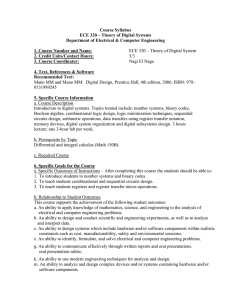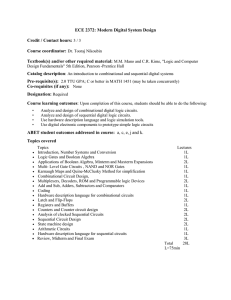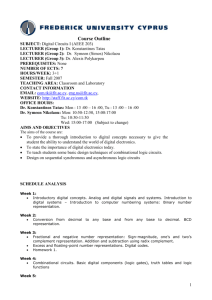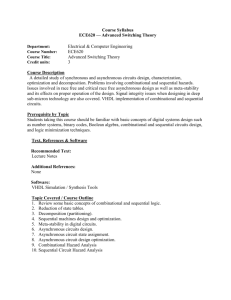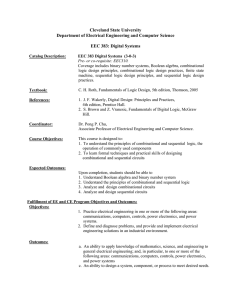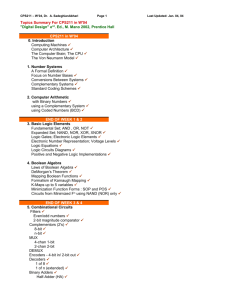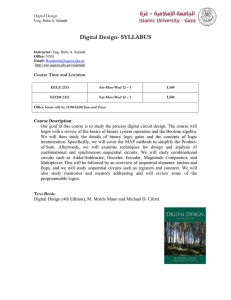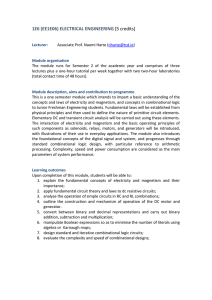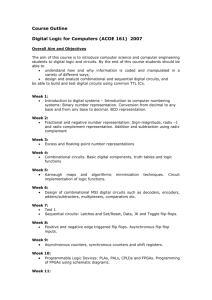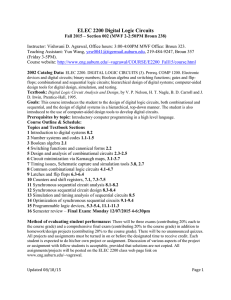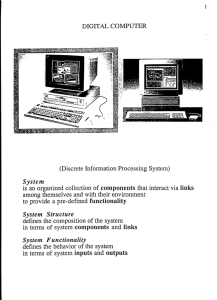Course Title - Philadelphia University
advertisement
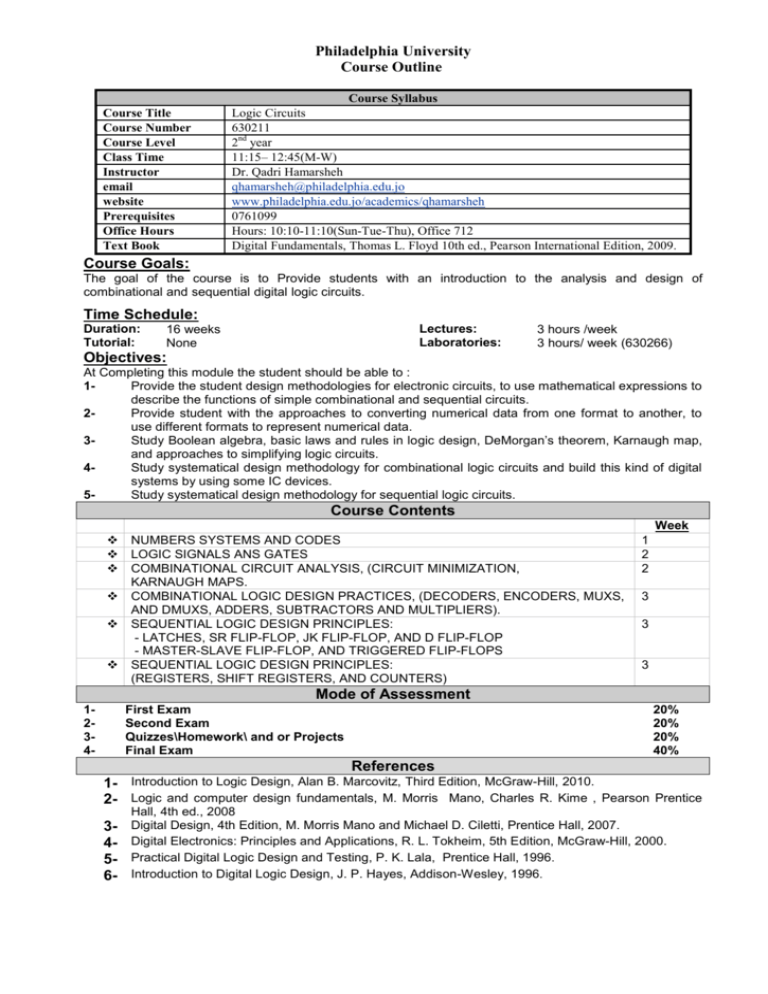
Philadelphia University Course Outline Course Title Course Number Course Level Class Time Instructor email website Prerequisites Office Hours Text Book Course Syllabus Logic Circuits 630211 2nd year 11:15– 12:45(M-W) Dr. Qadri Hamarsheh qhamarsheh@philadelphia.edu.jo www.philadelphia.edu.jo/academics/qhamarsheh 0761099 Hours: 10:10-11:10(Sun-Tue-Thu), Office 712 Digital Fundamentals, Thomas L. Floyd 10th ed., Pearson International Edition, 2009. Course Goals: The goal of the course is to Provide students with an introduction to the analysis and design of combinational and sequential digital logic circuits. Time Schedule: Duration: Tutorial: Lectures: Laboratories: 16 weeks None 3 hours /week 3 hours/ week (630266) Objectives: At Completing this module the student should be able to : 1Provide the student design methodologies for electronic circuits, to use mathematical expressions to describe the functions of simple combinational and sequential circuits. 2Provide student with the approaches to converting numerical data from one format to another, to use different formats to represent numerical data. 3Study Boolean algebra, basic laws and rules in logic design, DeMorgan’s theorem, Karnaugh map, and approaches to simplifying logic circuits. 4Study systematical design methodology for combinational logic circuits and build this kind of digital systems by using some IC devices. 5Study systematical design methodology for sequential logic circuits. Course Contents Week NUMBERS SYSTEMS AND CODES LOGIC SIGNALS ANS GATES COMBINATIONAL CIRCUIT ANALYSIS, (CIRCUIT MINIMIZATION, KARNAUGH MAPS. COMBINATIONAL LOGIC DESIGN PRACTICES, (DECODERS, ENCODERS, MUXS, AND DMUXS, ADDERS, SUBTRACTORS AND MULTIPLIERS). SEQUENTIAL LOGIC DESIGN PRINCIPLES: - LATCHES, SR FLIP-FLOP, JK FLIP-FLOP, AND D FLIP-FLOP - MASTER-SLAVE FLIP-FLOP, AND TRIGGERED FLIP-FLOPS SEQUENTIAL LOGIC DESIGN PRINCIPLES: (REGISTERS, SHIFT REGISTERS, AND COUNTERS) 1 2 2 3 3 3 Mode of Assessment 1234- First Exam Second Exam Quizzes\Homework\ and or Projects Final Exam 20% 20% 20% 40% References 1- Introduction to Logic Design, Alan B. Marcovitz, Third Edition, McGraw-Hill, 2010. 2- Logic and computer design fundamentals, M. Morris Mano, Charles R. Kime , Pearson Prentice 3456- Hall, 4th ed., 2008 Digital Design, 4th Edition, M. Morris Mano and Michael D. Ciletti, Prentice Hall, 2007. Digital Electronics: Principles and Applications, R. L. Tokheim, 5th Edition, McGraw-Hill, 2000. Practical Digital Logic Design and Testing, P. K. Lala, Prentice Hall, 1996. Introduction to Digital Logic Design, J. P. Hayes, Addison-Wesley, 1996.
